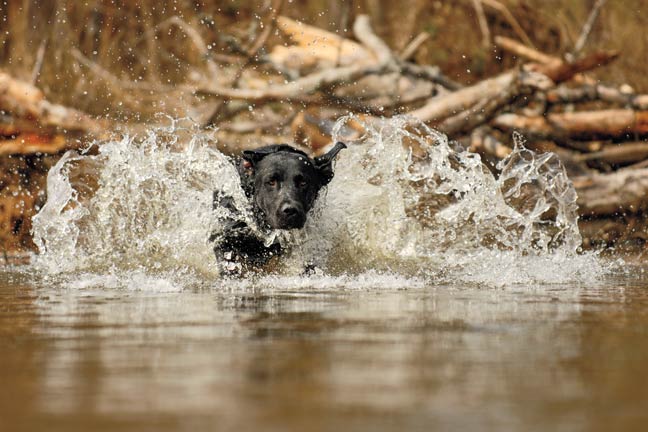Most of us think we are dead-eyes with a shotgun, but in waterfowling sometimes we’ll only wing a duck and they hit the water swimming hard. When this happens, the focus shifts to ensuring that crippled bird ends up in the dog’s mouth.
It can be as simple as letting a retriever loose and watching him do his thing, but that situation depends heavily on the amount of damage the duck has taken. For other birds, it’s going to require touching off another round.
All crippled ducks, especially divers and sea ducks, will try to get away any way they can. Since they can no longer fly, that means they are going under to avoid capture. My general rule is if a bird has its head up on the water, it’s time to get another shot into them.

With a steady dog that hasn’t scrambled into the water, you can wait for the follow-up shot. That’s a perfect-world scenario, however, because not all dogs will sit at your side until released. When this happens, you now have a duck that needs to be shot again and a dog in the water. Of course, it’s also entirely possible to knock a duck silly enough so that he splashes down like he is dead, only to have him come to his senses when your dog gets close.
There is no way to overstate how important it is to safely navigate this reality. When I hunt with a group, I always tell them ahead of time that I’m either the cripple shooter, or I’m the one who calls the shots. I don’t care if that hurts someone’s feelings, because it’s not about them or me—it’s about keeping the dog safe. You have to have control of the situation from beginning to end to ensure your dog comes back home healthy and happy.
You also have to make sure your dog understands the situation.
Staying In-Tune
The goal of training for cripples is to ensure the dog focuses on the wounded bird and can tune out any other distractions. One of those distractions, which can be hard to ignore, is the follow-up shot.
For this, it’s imperative your dog has been properly introduced to gunfire. If this is the case, then it’s time to grab a training dummy and a blank gun and start off on land. Have the dog at heel and toss the dummy. Once he is halfway to the dummy, touch off a shot. This will start to simulate what he will experience when you’re finishing off a cripple on the water. The goal to get your dog comfortable completing the retrieve without stopping to look back at you or…





